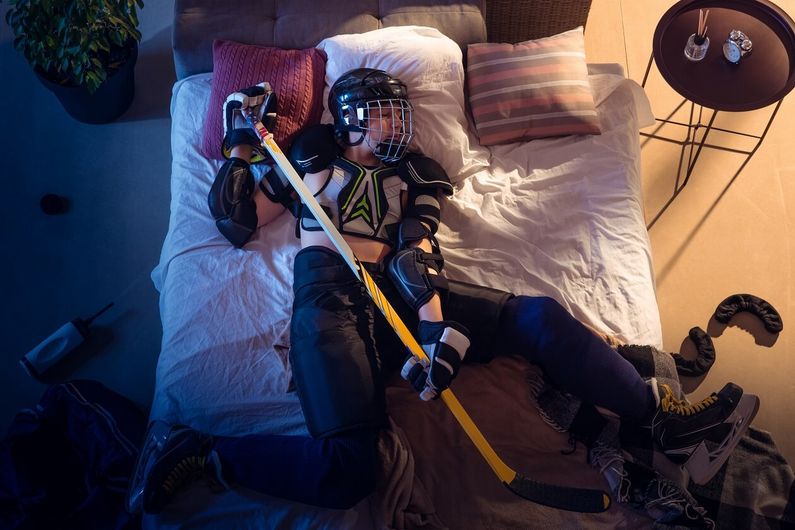Be happy, play hockey
- UdeMNouvelles
05/26/2023
- Martin LaSalle
Ph.D. student Amélie Apinis-Deshaies has found that well-being is the most important factor influencing sleep, recovery and performance in professional hockey players.
A typical season for American Hockey League (AHL) players consists of a four-week training camp followed by a 28-week regular season with 76 games and 98 practices.
That comes to an average of 3.5 practices and 2.7 games per week, or six days a week of intense activity. This is why it is so important for players to get enough restorative sleep, experts say.
But according to a 2017 study of 107 professional athletes, nearly half experience problems with sleep quantity or quality during the hockey season.
How much of this can be attributed to the pressures of training and playing, as opposed to other aspects of their lives unrelated to their sport?
In her doctoral thesis under the supervision of Université de Montréal kinesiology professor Jonathan Tremblay, Amélie Apinis-Deshaies decided to find out. She had previously been a gymnast for 10 years and then a coach for over 15 years.
Data from 50 players
Apinis-Deshaies selected and analyzed data from 50 AHL players aged 20 to 27 that had been collected as part of a master's degree project done by Pierre Allard, a former sports science and performance director with the Montreal Canadiens.
An UdeM graduate, Allard is today an assistant coach with the Red Bull hockey team in Munich, Germany. In 2017-2018, while doing his master's, he was responsible for the physical preparation of players on an AHL team.
Apinis-Deshaies focused on two factors liable to influence sleep quality: the players’ external training load and their sense of well-being. She also looked at the impact of the games and on-ice training.
The data had been collected through a daily questionnaire that players completed throughout the 2017-2018 season using an app on their phones. Every morning, they were asked to report the quantity and quality of their sleep, how rested they felt and their overall sense of well-being, and to answer questions about their diet, stress levels and pain.
The players also wore inertial sensors on their equipment that recorded the effort they expended in the 63 practices, 35 morning skates, 60 evening games and 16 day games they participated in that season.
"This analysis was important,” Apinis-Deshaies said. “A hockey player’s ice time can be divided into three types of activity: a typical player will spend an average of 45 per cent of his time accelerating or decelerating, 16 per cent skating to maintain his speed, and 39 peer cent gliding on the ice."
Sleep worse after away games
The eight centres, 21 defensemen and 21 wingers who took part in the project slept an average of eight hours per night.
Sleep quality and duration were more impaired after away games than home games, and also more after evening games than day games.
The intensity of the game also had an effect on the players’ sleep quality. Interestingly, however, whether their team won or lost didn’t affect their sleep at all.
"The factor that has the greatest positive influence on the quality and duration of sleep is the player’s sense of well-being, regardless of the amount of training or amount of effort in a game," said Apinis-Deshaies.
"A player's well-being depends on, among other things, the frequency of travel to other, often distant cities, the pressure to perform, injuries and a busy schedule," she said.
“Coaches and team staff must all work to reduce negative effects, including non-hockey-related stressors, in order to improve players’ well-being so their nights can be both restful and restorative."













